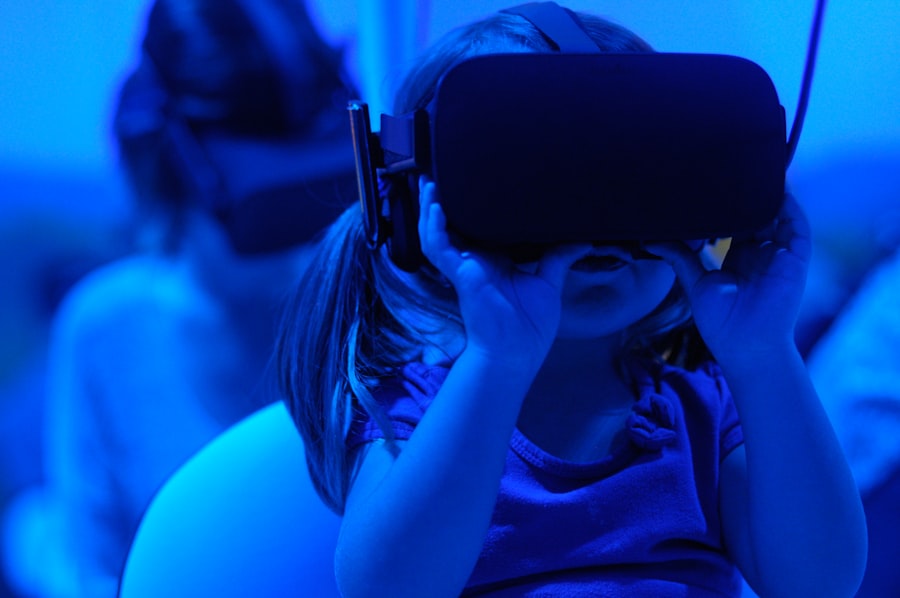As I delve into the realms of philosophy and technology, I find myself increasingly drawn to the ancient wisdom of Stoicism and its potential applications in our modern, tech-driven world. Stoicism, a school of thought that originated in ancient Greece, emphasizes the importance of virtue, self-control, and rationality. It teaches us to focus on what we can control while accepting what we cannot.
In a time when technology permeates every aspect of our lives, the principles of Stoicism offer a refreshing perspective on how to navigate the complexities and challenges that arise from our digital interactions. Mindful tech, on the other hand, is a contemporary concept that encourages intentional and conscious use of technology. It advocates for a balanced relationship with our devices, promoting awareness of how technology affects our mental and emotional well-being.
By integrating Stoic principles into our approach to technology, I believe we can cultivate a more harmonious existence, one that allows us to harness the benefits of innovation while minimizing its potential pitfalls. This article will explore the intersection of Stoicism and mindful tech, providing insights into how these two seemingly disparate areas can work together to enhance our lives.
Key Takeaways
- Stoicism is an ancient philosophy focused on personal ethics and resilience in the face of adversity, while mindful tech is the practice of using technology in a conscious and intentional way.
- Stoic principles such as focusing on what is within our control and accepting the impermanence of technology can help us navigate the challenges of the digital age.
- Technology can have both positive and negative effects on mental well-being, from increased connectivity to heightened distraction and addiction.
- Strategies for incorporating Stoicism into daily technology use include setting boundaries, practicing gratitude, and embracing discomfort.
- Practical tips for practicing mindful tech include setting tech-free zones, scheduling regular digital detoxes, and using mindfulness apps to cultivate awareness and presence.
The Principles of Stoicism and How They Apply to Technology
At the heart of Stoicism lies a set of core principles that can be remarkably relevant in our tech-saturated environment. One of the fundamental tenets is the distinction between what is within our control and what is not. In my experience, this principle serves as a powerful reminder when I find myself overwhelmed by the constant barrage of notifications and information.
I realize that while I cannot control the influx of data or the actions of others online, I can control my reactions and choices regarding technology use. This understanding empowers me to take charge of my digital life rather than feeling like a passive participant. Another key aspect of Stoicism is the practice of mindfulness and reflection.
The Stoics believed in regularly examining one’s thoughts and actions to align them with their values. In the context of technology, this means taking time to reflect on how my digital habits align with my personal goals and well-being. For instance, I often ask myself whether my social media usage enhances my life or detracts from it.
By applying this principle, I can make more informed decisions about my technology use, ensuring that it serves my best interests rather than becoming a source of distraction or anxiety.
The Impact of Technology on Mental Well-being

As I navigate through the digital landscape, I cannot ignore the profound impact that technology has on mental well-being. On one hand, technology offers unprecedented access to information, connection, and opportunities for personal growth. However, on the other hand, it can also lead to feelings of isolation, anxiety, and overwhelm.
I have experienced moments where scrolling through social media leaves me feeling inadequate or disconnected from reality. The curated lives of others can create unrealistic expectations and foster a sense of comparison that is detrimental to my mental health. Moreover, the constant connectivity that technology provides can lead to a state of perpetual distraction.
I often find myself multitasking between various apps and platforms, which diminishes my ability to focus on any single task. This fragmented attention can result in increased stress levels and decreased productivity. Recognizing these patterns has prompted me to seek ways to mitigate their effects on my mental well-being.
By understanding the dual nature of technology’s impact, I can take proactive steps to cultivate a healthier relationship with my devices.
Strategies for Incorporating Stoicism into Daily Technology Use
| Strategies | Benefits |
|---|---|
| Limiting social media usage | Reduced distractions and increased focus |
| Practicing mindfulness during screen time | Improved self-awareness and reduced stress |
| Setting technology boundaries | Enhanced work-life balance and better mental health |
| Using technology for learning and growth | Increased knowledge and personal development |
Incorporating Stoicism into my daily technology use requires intentionality and practice. One effective strategy I have adopted is setting clear boundaries around my technology usage. For instance, I designate specific times during the day for checking emails or social media, allowing me to engage with these platforms mindfully rather than mindlessly scrolling throughout the day.
This practice aligns with the Stoic principle of self-discipline, enabling me to take control of my time and attention. Another strategy involves practicing gratitude and contentment in my digital interactions. The Stoics emphasized the importance of appreciating what we have rather than constantly seeking more.
When I find myself tempted to compare my life to others online, I remind myself to focus on my own journey and accomplishments. By cultivating an attitude of gratitude for the connections I have and the information I access, I can shift my perspective from one of scarcity to one of abundance.
Practical Tips for Practicing Mindful Tech
Practicing mindful tech is an ongoing journey that requires consistent effort and reflection. One practical tip that has proven beneficial for me is to create tech-free zones in my home or daily routine. For example, I have designated certain areas, such as my bedroom or dining table, as spaces where technology is not allowed.
This intentional separation allows me to engage more fully with my surroundings and fosters deeper connections with those around me. Additionally, I have found it helpful to engage in regular digital detoxes—periods where I consciously unplug from technology for a set amount of time. During these detoxes, I focus on activities that nourish my mind and spirit, such as reading, journaling, or spending time in nature.
This practice not only helps me recharge but also reinforces the Stoic idea of moderation and balance in all aspects of life.
Case Studies of Individuals Finding Balance with Stoicism and Mindful Tech

Reclaiming Time and Reducing Stress
One such individual, a young professional, was overwhelmed by her work emails and social media notifications. After discovering Stoicism, she began practicing daily reflection to assess her priorities and set boundaries around her technology use. By focusing on what truly mattered – her relationships and personal growth – she was able to reclaim her time and reduce her stress levels significantly.
Finding Peace and Balance
Another compelling example is that of a college student who struggled with anxiety stemming from constant connectivity and social media pressures. After learning about Stoic principles, she adopted a practice of journaling her thoughts and feelings each evening. This reflective exercise helped her process her emotions and gain clarity on her values. By consciously curating her online presence and limiting her screen time, she found a newfound sense of peace and balance in her life.
Transforming Lives through Mindful Tech Practices
These stories demonstrate the power of combining Stoicism with mindful tech practices to transform lives. By adopting daily reflection, journaling, and conscious technology use, individuals can reclaim their time, reduce stress, and find peace and balance in their lives.
The Future of Stoicism and Mindful Tech in a Digital Age
As I contemplate the future of Stoicism and mindful tech in our increasingly digital age, I am filled with both hope and caution. The rapid advancement of technology presents both opportunities for growth and challenges for mental well-being. However, I believe that as more individuals become aware of the importance of mindfulness in their tech interactions, there will be a growing movement toward integrating philosophical principles like Stoicism into our daily lives.
In this evolving landscape, I envision a future where technology is designed with user well-being in mind—where apps encourage reflection rather than distraction and where digital platforms foster genuine connections rather than superficial interactions. By embracing Stoic principles as guiding frameworks for our relationship with technology, we can create a more balanced existence that prioritizes mental health alongside innovation.
Resources for Further Exploration of Stoicism and Mindful Tech
For those interested in exploring the intersection of Stoicism and mindful tech further, there are numerous resources available that can provide valuable insights and guidance. Books such as “The Daily Stoic” by Ryan Holiday offer practical wisdom from ancient philosophers that can be applied to modern life. Additionally, online courses focused on mindfulness practices can help individuals cultivate awareness in their technology use.
Podcasts dedicated to philosophy and mental well-being also serve as excellent resources for those seeking inspiration on this journey. Engaging with communities—both online and offline—that share an interest in Stoicism can foster meaningful discussions and support as we navigate our digital lives together. In conclusion, as I reflect on my own experiences with Stoicism and mindful tech, I am reminded of the profound impact these principles can have on our lives in an increasingly complex world.
By embracing the teachings of ancient philosophers while remaining conscious of our technology use, we can cultivate a more balanced existence that prioritizes mental well-being amidst the noise of modern life.
If you are interested in Stoicism and Mindful Technology Design, you may also find the article How Your Thoughts Could Make You Sick intriguing. This article explores the connection between our mental state and physical health, emphasizing the importance of mindfulness and self-awareness in maintaining overall well-being. It delves into the power of our thoughts and how they can impact our health, highlighting the need for a balanced and positive mindset. Incorporating Stoic principles and mindful technology design can help cultivate a healthier mindset and improve overall quality of life.
FAQs
What is Stoicism?
Stoicism is a school of philosophy that originated in ancient Greece, focusing on personal ethics and the importance of self-control and resilience in the face of adversity.
What is Mindful Technology Design?
Mindful technology design refers to the practice of creating technology products and services with a focus on promoting well-being, mindfulness, and ethical use of technology.
How does Stoicism relate to Mindful Technology Design?
Stoicism emphasizes the importance of self-awareness, self-control, and living in harmony with nature, which aligns with the principles of mindful technology design. Both philosophies encourage individuals to use technology in a way that enhances their well-being and promotes ethical behavior.
What are some practical applications of Stoicism in Mindful Technology Design?
Practical applications of Stoicism in mindful technology design may include creating digital tools that promote self-reflection, mindfulness, and moderation in technology use. It may also involve designing user interfaces that encourage intentional and mindful interaction with technology.
How can individuals incorporate Stoic principles into their use of technology?
Individuals can incorporate Stoic principles into their use of technology by practicing self-awareness, moderation, and mindfulness when engaging with digital devices and platforms. This may involve setting boundaries for technology use, practicing digital detox, and using technology in ways that align with their personal values and well-being.













Add Comment